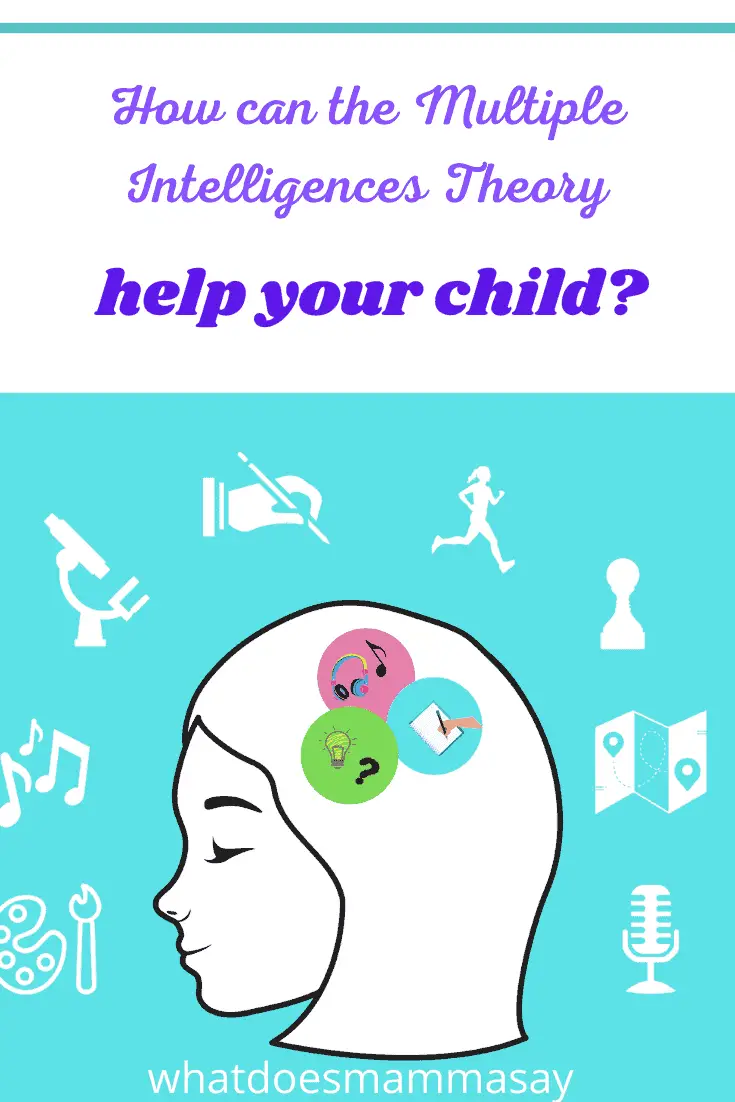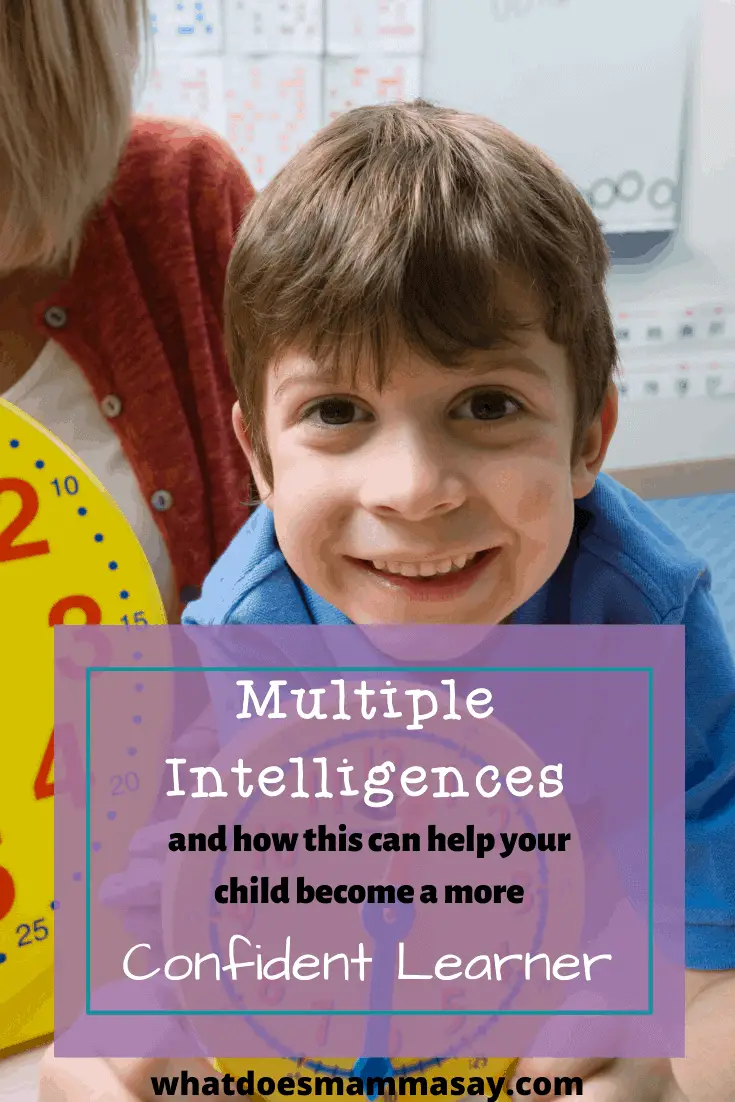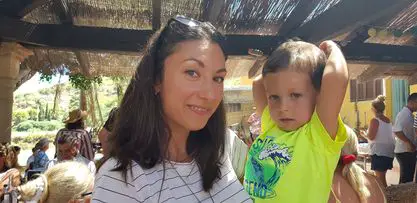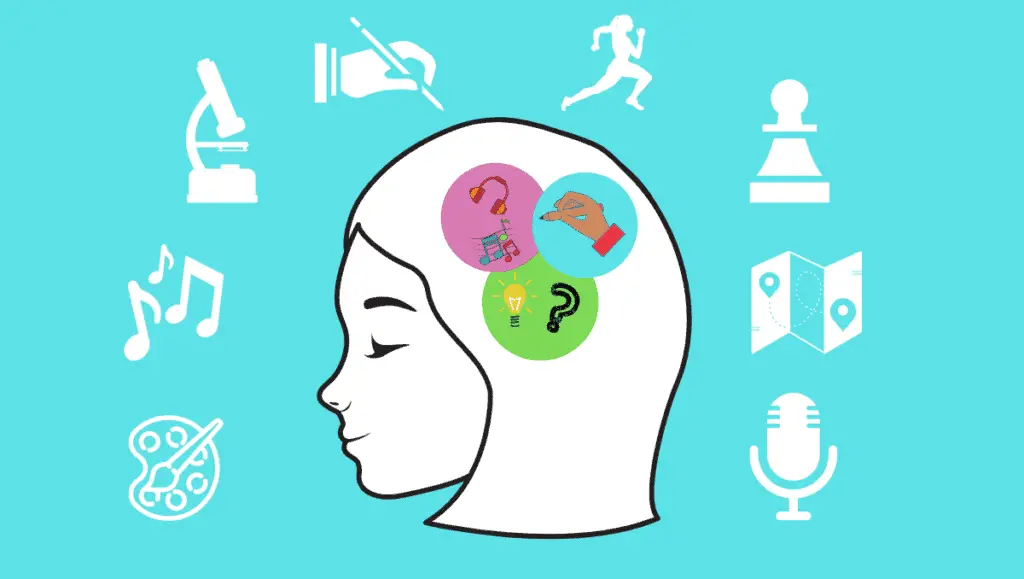Part of my job as a teacher isn’t just feeding my students information but also “analyzing” them, discovering their strengths and unique abilities. This allows me to tailor my lessons in such a way as to give each student the chance to learn in his/her style.
I remember as a young teacher I was very interested in child psychology as it goes hand in hand with teaching. I read a lot about Lev Vygotsky’s Theory of Cognitive Development or Piaget’s Theory of Cognitive and Moral Development. But the one that truly intrigued me was Howard Gardner’s Multiple Intelligences Theory. It simply made sense to me and confirmed something that I’ve always known: that ‘one size doesn’t fit all’ when it comes to education and child development in general.
This post may contain affiliate links and I may earn a small commission when you click on the links at no additional cost to you. As an Amazon Affiliate, I earn from qualifying purchases. You can read my full disclosure here.

But who is Howard Gardner?
Howard Gardner was born in 1943 in Pennsylvania, U.S. Education was always Gardner had always been a studious child who loved playing the piano. Although he was quite a gifted piano player he never pursued this career. Instead, he went on to graduate from Harvard University in 1965 with a BA in social relations and later on, in 1971, a PhD in developmental psychology.
Howard Gardner, as can be expected, has had quite a rich, fulfilling professional career. Between 1986 and 2019 he taught at The Harvard Graduate School of Education. In 2000, Gardner and his Harvard colleague Kurt Fischer developed the unique master’s degree program in Mind, Brain and Education. Since then many universities around the world have developed similar programs.
He is also a prolific writer with thirty books and hundreds of articles under his belt. He has given a lot to the educational community but he is best known for his Multiple Intelligences Theory.
What is the Multiple Intelligences Theory?
Howard Gardner first presented the Multiple Intelligences Theory in his book Frames of Mind: The Theory of Multiple Intelligences in 1983. Here he characterizes human intelligence as having several dimensions that must be acknowledged and developed. Basically, what Gardner says is that each person has a different way of learning and understanding the world.
One of the important points that Gardner brings forward with his theory is that “we are all able to know the world through language, logical-mathematical analysis, spatial representation, musical thinking, the use of the body to solve problems or to make things, an understanding of other individuals, and an understanding of ourselves. Where individuals differ is in the strength of these intelligences – the so-called profile of intelligences -and in the ways in which such intelligences are invoked and combined to carry out different tasks, solve diverse problems, and progress in various domains.”
In his Multiple Intelligences Theory, Gardner identifies eight abilities or intelligences.
What are the eight intelligences?
1. Visual-spatial
– children learn by ‘seeing’. They are very aware of their surroundings. Children who have a visual-spatial intelligence learn best through charts, maps and diagrams, videos, slides and films, art and pictures, visual awareness activities, photography, painting, drawing, and using mind maps.
See Activities for Visual-Spatial Intelligence
2. Musical
– children are sensitive to rhythm, tone, and sounds. They learn best through recorded music, playing music (piano, guitar, recorder, etc.), learner-made instruments, singing, chants.
See activities for Auditory Learners
3. Bodily-kinesthetic
– children learn by ‘doing’. They like using their body and have a keen awareness of motion. Bodily-kinesthetic kids learn through creative movement, messy activities, role plays, field trips, miming, realia, and TPR (Total Physical Response). The best approach for them is hands-on learning.
See Activities for Bodily-Kinesthetic Intelligence
4. Verbal-linguistic
– children are good with words and languages. They like group discussions, books, worksheets, word games, listening to CD’d, storytelling, writing in journals, debates, memorizing. They ‘think in words’.
See Activities for Verbal-Linguistic Learners
5. Logical-Mathematical
– children are good with numbers, critical thinking, reasoning, and logic. They love solving puzzles, experimenting, logic problems, quizzes, creating codes, exploring story problems and solutions.
See Activities for Logical-Mathematical Intelligence
6. Interpersonal
– children are sensitive to the needs of others, they are empathic and like making friends. They learn best through cooperative groups, peer teaching, group brainstorming, board games, pair work.
See Interpersonal Intelligence Activities
7. Intrapersonal
– children are more focused on their own goals, they usually have good intuition and are highly motivated. They learn best through independent student work, individualized projects, checklists, keeping a diary, self-teaching or programmed instruction, reflective learning, goal setting.
See Activities for Intrapersonal Intelligence
8. Naturalist
– In 1995 Howard proposed an 8th intelligence, the “Naturalistic” for the individuals who are drawn to flora and fauna and could be productive in farming, hunting, and biological science.
See Naturalistic Intelligence Activities

*Although not officially “one of the gang”, there is also an Existential Intelligence. This intelligence deals with a person’s capacity to ask questions of a philosophical nature and ponder life’s mysteries. People with an existential intelligence also tend to see the big picture.
My view on Multiple Intelligences and how it benefitted my students
After almost nine years of working in the educational field, I’ve come across a few teaching methods. From the stiff ‘teacher is the lecturer and the student just a passive participant to the ‘memorize like a robot from the coursebook’ style. Needless to say, I was pretty uncomfortable with these antiquated teaching methods, not to mention that I had a class full of bored students who took no pleasure in learning.
Then, I had the chance to start working in a more open-minded school that used Gardner’s Multiple Intelligences Theory in the classsroom as their main approach. What a difference!
Instead of dull expressions, I saw curious eyes full of excitement, instead of students who just went through the learning motions like puppets because they had to, I saw motivated children who were eager to learn.
At the beginning of each school year, I closely observed my students trying to get to know them individually. I watched closely what type of activities each child liked and made notes. After the initial getting-to-know period I had a pretty good idea of what dominant type of intelligence each student in my class had. This allowed me to tailor my lessons in such a way as to give each child the opportunity to learn in his/her own unique way.
Let’s imagine I had a class in which the prevalent intelligence was kinesthetic. I would create lesson plans that contained a lot of movement, role plays. I would bring realia to class and use plenty of TPR (total physical response).
However, even if the class was more kinesthetic, it didn’t mean that I didn’t include activities for the other types of intelligences. What I found out, and it’s quite an important aspect, is that children don’t just have one dominant intelligence. They may have two or even three. Thus, a kinesthetic student may also have musical intelligence. Or a logical-mathematical student can have a visual-spatial intelligence. This means that the Multiple Intelligences Theory may not be as straightforward as a lot of people believe.
It is important to know that children can discover the world around them using the 8 Intelligences proposed by Gardner. They will make use of their linguistic abilities, they will utilize logic, they will learn through music and dancing. However, each individual will have stronger areas through which they will be able to process information easily.
So, in order to successfully apply Gardner’s Multiple Intelligences Theory in the classroom, it is vital to really get to know my students’ preferences and where their strengths lie. Taking all this into account I can come up with activities that will allow each student to learn through his/her prefered intelligence.
Why is the Multiple Intelligences Theory relevant to parents?
Although The Multiple Intelligences Theory is widely used in schools, its principles can also be applied at home. Parents can use Howard Gardner’s theory in order to help their kids discover the world in a way that makes sense to them and it is also pleasant.
Besides being a teacher, I am also a mom. So, naturally, I have been watching my son and trying to figure out what types of intelligences he may have so that I can focus more on activities that he will enjoy and also have more to gain.
And although he is a little young for such an analysis to be accurate, I’ve discovered that he loves role-playing, and the hands-on approach. This means that he may lean towards Bodily-Kinesthetic intelligence. He loves music, rhythm, and dancing so he might have Musical Intelligence. He’s not too keen on arts and crafts, painting, and drawing, which leads me to believe that he may not be a visual learner. But, as I said, he is a little young, so this might change in time.
After seeing the wonderful results that the Multiple Intelligences Theory has had in the classroom, I fully encourage parents at home to try and figure out what type of intelligences their child might have. For younger children simply observe them and see where their strengths lie. For older kids who can read and write, I recommend giving them this Multiple Intelligences Test which is has a friendlier format and simplified language than the original test.
The benefits of the Multiple Intelligences Theory are many. From children feeling more confident in an educational system that traditionally values linguistic and mathematical intelligences to providing kids with a dynamic and diverse environment where they can enjoy art, music, or nature.
What type of intelligences do you think your child has? I am looking forward to finding out in the comments section below.

Mom of two wonderful children, dedicated teacher and book lover.


This is very interesting! My son is definitely Logical-Mathematical. He LOVES numbers, counting, anything to do with math. My daughter is Intrapersonal. She hasn’t let me help her with hardly anything since we’ve been homeschooling and she makes a checklist every Monday for her assignments!
This is an interesting look at different types of children. It is useful in understanding how people function.
I know just from my own two children how different each child is, so I can imagine how even more so in a classroom of kids! My daughter is more on the go, likes movement. My son is the same, but also really on interested in arts and crafts, drawing, etc
So interesting! My undergrad is in psychology and I don’t remember learning about him at all! I love any ideas and theories that can help teach our kids in the manner they thrive best. We need more of this! There is certainly no one size fits all!
I too studied Howard Gardner in graduate school many, many years ago! As a parent I incorporate this theory into our everyday lives. It is challenging at times because my daughter and I differ on our intelligences and as I guide her, she often sees the world in a very different way. We both have a musical intelligence but she has strength in logical-mathematical (My weakest strength) and I am clearly verbal-linguistic.
Love your post! Very informational and seems like you’re a great teacher!
Thank you so much for your kind words, Jenn!
We’re at a point with our son where we need to really pay attention to how he learns. We’re starting on homeschooling and so far it’s not been an easy thing. I’ll have to look into this further for some pointers!
I use multiple intelligences theory in my junior high classroom every day. Kids learn differently, and it’s up to teachers to help them learn in a manner that works. Plus, it keeps the kids on their toes and keeps my lessons from always being the same old thing,
My daughter loves singing and dancing and using her imagination! She definitely leans toward musical intelligence I think. What a cool article!